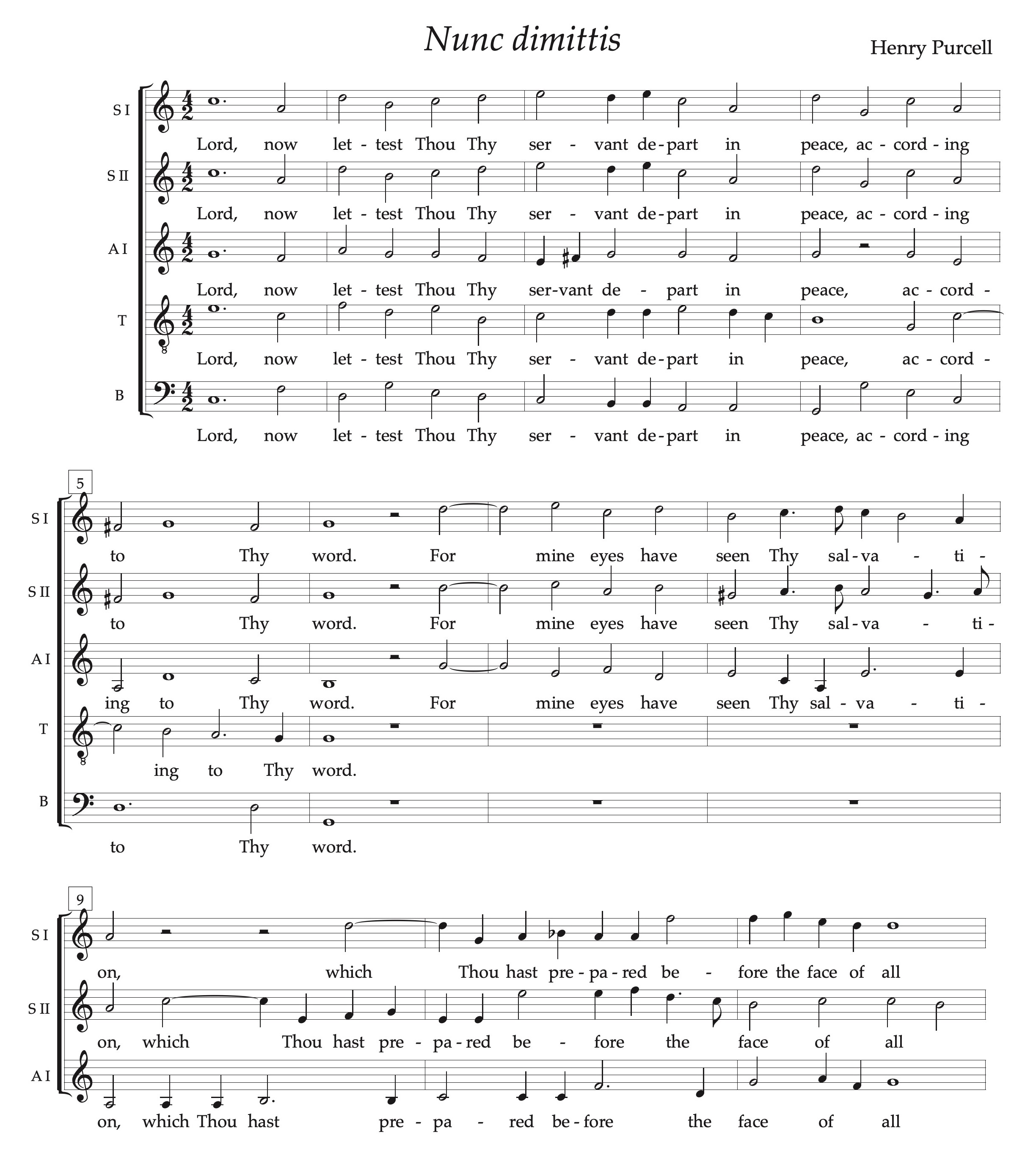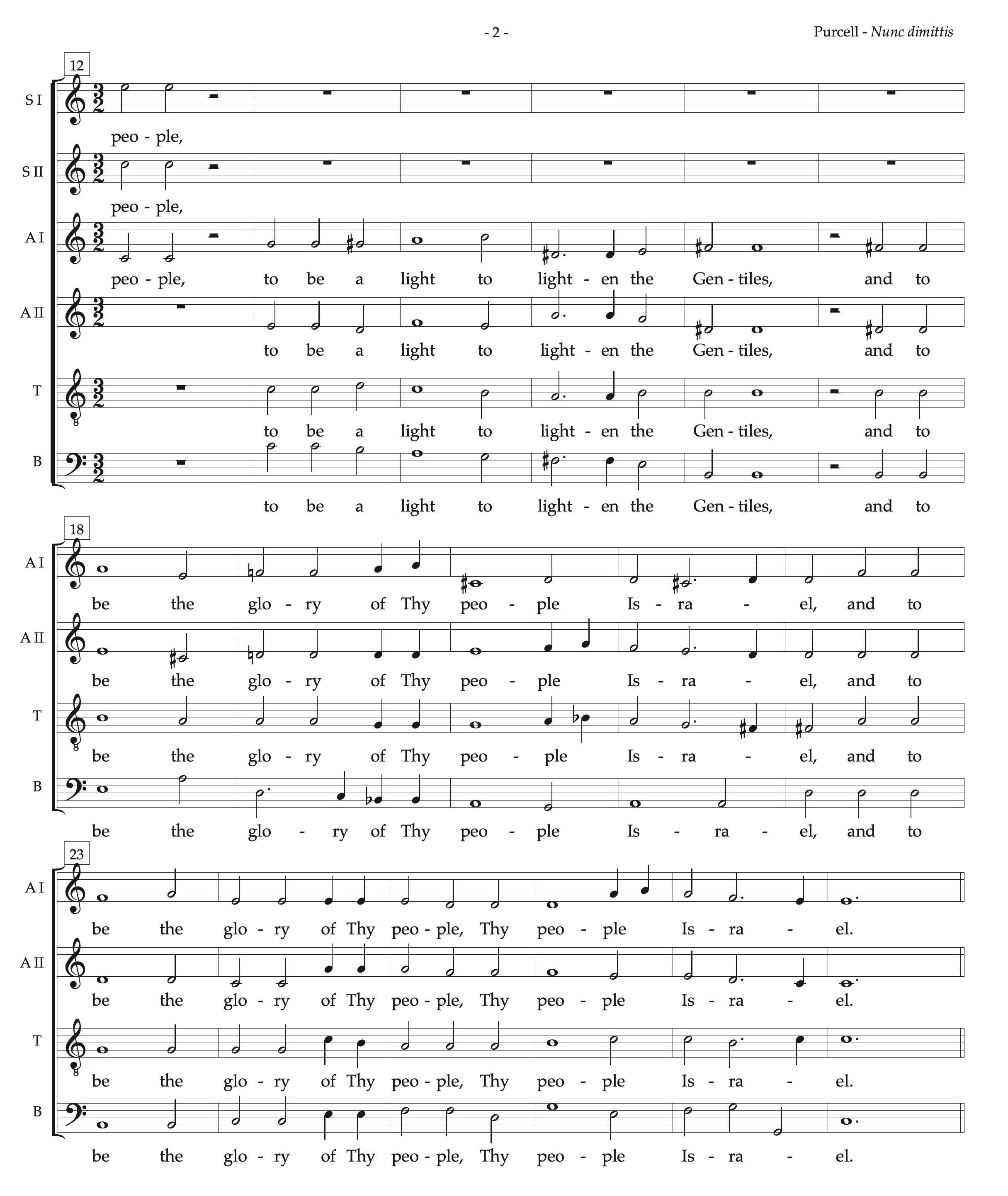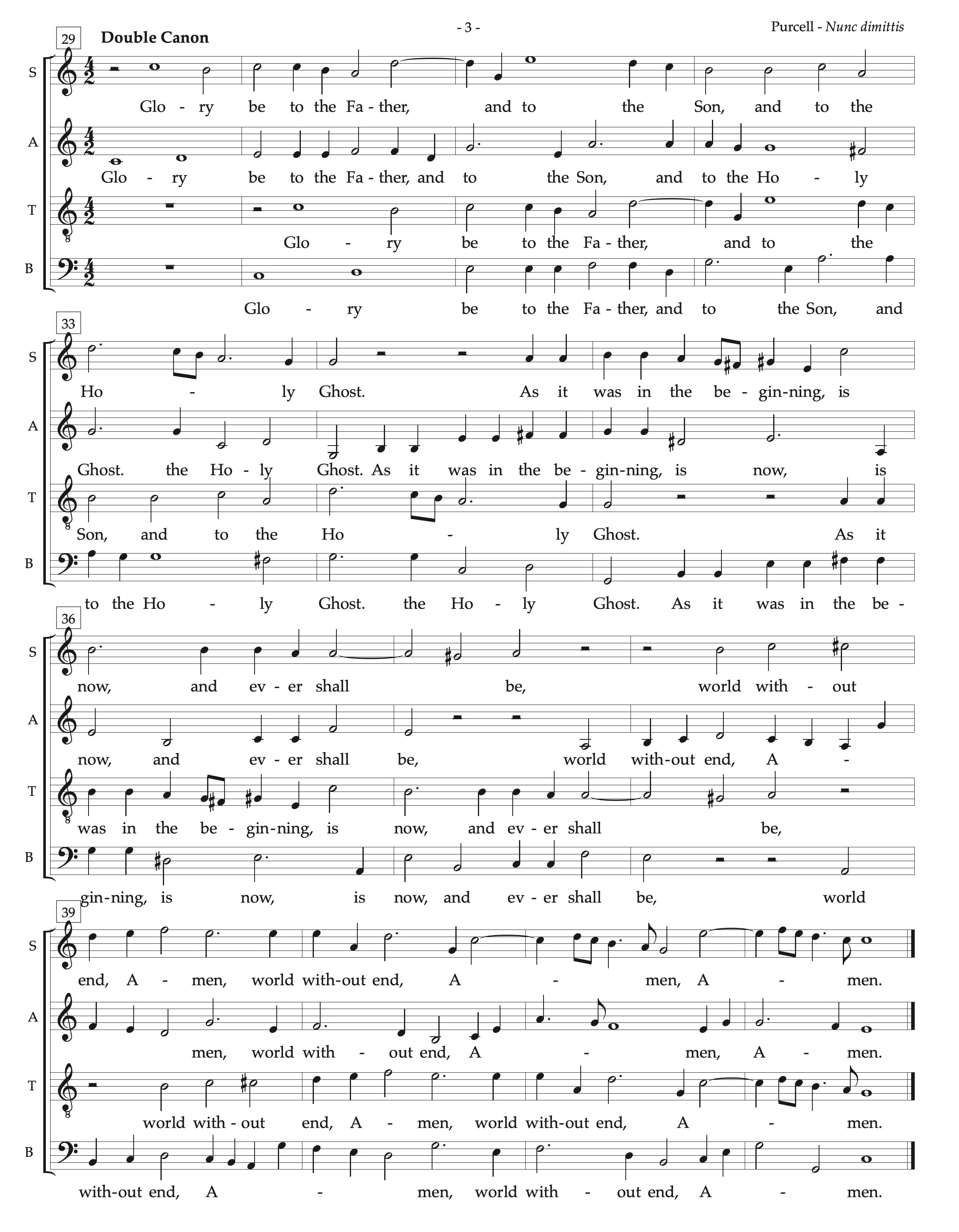LEARNING MORE ABOUT THE MUSIC WE SING
|
Lesson 9, for April 20
In Purcell’s Nunc dimittis, composed to English words despite its Latin title, each phrase of text is set to a different combination of voices. Very much in the Anglican tradition is the one-note-per-syllable homophony of the first phrase and a half. The trio of high voices that begins at “For mine eyes” begins a striking ascent up the scale for S I and S II at m. 9, each new half-note one note higher than the previous. “To be a light” is set for the four lowest voices, entirely homorhythmically.
The highpoint of this miniature anthem is the double canon at “Glory be to the Father”—not only a contrapuntal feat on its face but one with impressive rhythmic propulsion to the final cadence. We might wonder what it was about these particular words that inspired Purcell to set them as double canon, i.e., as a duet for the S and A to be followed by an identical duet a measure later and an octave lower for T and B. The words “Glory be to the Father” are known as a doxology, a hymn of praise to the Trinity. In the Christian religion of all denominations doxologies are said or sung at the end of psalms, hymns (final verse), and canticles (psalm-like poems from the New Testament, such as the Magnificat and the Nunc dimittis). Saying or singing doxologies at these moments had the force of a rule, a word which we saw in Lesson 8 is synonymous with “canon.” What could be more canonical than a double canon?
End of Lesson 9. Click here to continue to Lesson 10, for April 22. Click here to return to the Lesson List.
|
|





